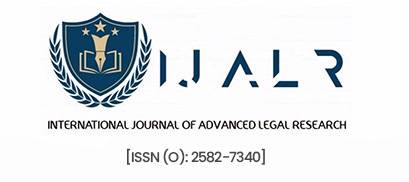ABSTRACT
Intellectual property is the fuel that drives innovation and creativity and therefore, its protection is must.Among various rights, patent right is a prominent one that not only gives exclusive right to its owner but also contributes for the public welfare in a manner that after the expiry of certain period when the patentable substance goes into public domain it is useful for public purpose turning out to be beneficial to them. The patentability related to microorganism is highly contested and various judicial pronouncement have turned to be revolutionary in this arena. In this saga, the case of Diamond vs Chakraborty delivered by the US Supreme Court is an important one that welcomed the patentability of microorganisms which possess human ingenuity.
The microorganisms have an essential role in scientific invention and its application is vital for research and development purposes. Thus, myriad development in this regime can be observed pertaining to the various inventions and one such is patentability of Oncomouse where another divergence in this regard can be seen. The perusal ofan Indian judicial pronounce the case of Dimminaco A.G. versus Controller of Patents and Designs is noteworthy as it paved the way for the microbiological patent regime in India.
The aim of the paper is to scrutinize the regime of patent ability of microorganisms with special emphasis upon Diamond vs Chakravarty case and also discussing the developments in Indian context via the judgement pronounced by Calcutta High Court.
Keywords: microorganism, patents, oncomouse, human ingenuity.
INTRODUCTION
“Anything under the Sun made by man is patentable”
– Diamond v Chakravarty[1]
In this modern era competition is an inevitable part where technology and innovation are growing rapidly. To match the pace of this world, creativity is such a strand that impacts the success of a person. To prevent the exploitation of such a creativity and also to give some exclusive right to the owner, intellectual property rights come into play. Among various rights, patent right is a prominent one that not only gives exclusive right to its owner but also contributes for the public welfare in a manner that after the expiry of certain period when the patentable substance goes into public domain it is useful for public purpose turning out to be beneficial to them.
The patentability related to microorganism is highly contested and various judicial pronouncement have turned to be revolutionary in this arena. In this saga, the case of Diamond vs Chakraborty[2] delivered by the US Supreme Court is an important one that welcomed the patentability of microorganisms which possess human ingenuity. However, the arrival of TRIPS cannot be neglected that specially obligated its signatories to grant patent for micro-organisms that meet the eligibility criteria set by the national laws. The microorganisms have an essential role in scientific invention and its application is vital for research and development purposes. Thus, myriad development in this regime can be observed pertaining to the various inventions and one such is patentability of Oncomouse where another divergence in this regard can be seen.
India is a party to the TRIPS agreement and after the Patents Amendment Act of 2002, Section 3 of the Indian patent Act of 1970 grand patentability to the microorganisms. In India the case of Dimminaco A.G. versus Controller of Patents and Designs[3] is noteworthy as it paved the way for the microbiological patent regime in India.
The aim of the paper is to scrutinize the regime of patent ability of microorganisms with special emphasis upon Diamond vs Chakravarty case and also discussing the developments in Indian context via the judgement pronounced by Calcutta High Courtalogwith critically examining the panorama and the regime of intellectual property rights.
[1]447 U.S. 303 (1980)
[2]Ibid.
[3]2001 SCC Online Cal 901

